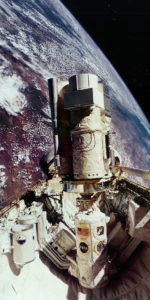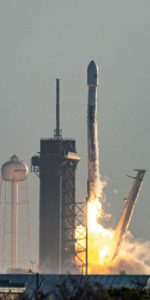
NASA’s Orion spacecraft for the first Artemis mission to return Americans to the moon has wrapped up a near 4-month long environmental testing campaign at the agency’s Glenn Research Center / Plum Brook Station in Sandusky, Ohio, marking a big milestone towards the Artemis-1 mission expected to launch in late 2021.
It’s the final stretch of major testing before integration with the mammoth Space Launch System (SLS) rocket for flight, subjecting it to the same temperatures and electromagnetic environment it will experience in the vacuum of space. Meanwhile, the SLS it will launch on is currently at Stennis Space Center in Mississippi preparing for a test fire campaign this summer.

Plum Brook’s premier space environments test facility is uniquely suited for this testing as it can provide a radio frequency free, or quiet, environment, which is important as it prevents external sources from affecting the test. The chamber’s walls are also made of highly reflective aluminum, which allows engineers to bathe the spacecraft in frequencies to simulate outside sources.
“The facility performed flawlessly,” said Mark Kirasich, Orion Program Manager. “It was very easy to execute the test, and even better for me, the spacecraft was incredible. Everything worked exactly as designed. We really had no issues.”
NASA put the spacecraft’s crew and service module under simulated extreme in-space conditions in the world’s largest vacuum chamber and powered-on Orion’s systems in vacuum conditions to simulate the space environment, subjecting it to extreme temperatures ranging from -250 to 300-degrees Fahrenheit, in order to replicate flying in-and-out of sunlight and shadow in space.

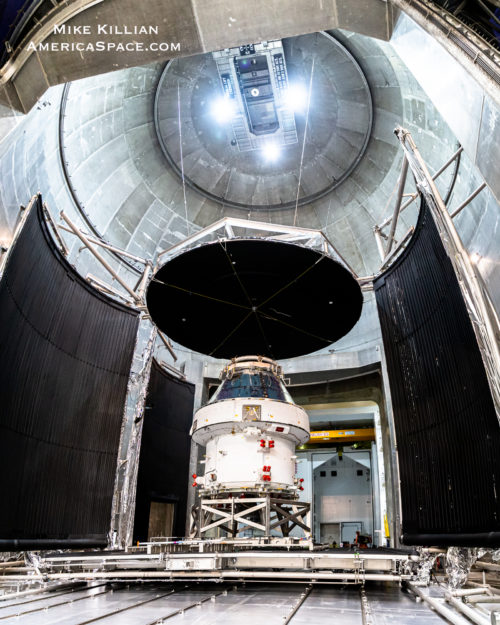
To simulate those conditions, a specially-designed system known as the Heat Flux was used to heat specific parts of the spacecraft at any given time and surrounded it with a set of large panels, called a cryogenic-shroud that provided the cold background temperatures of space. More than 1,000 measurements were made during this ‘Thermal Vacuum/Thermal Balance’ test phase, providing data to prove Orion’s design is sound and to help optimize planned spaceflight operations.
An ‘Electromagnetic Compatibility (EMC)/Electromagnetic Interference (EMI) test’ series followed, lasting about two weeks. Every electronic component of the vehicle gives off some type of electromagnetic field that can affect the performance of other electronics nearby; the testing ensured Orion’s electronics will work properly when operated at the same time on its mission to and from the moon. The team monitored operations of 140 flight critical functions of the spacecraft, covering 90 simulated mission events for an Artemis flight to the Moon and back. The EMI test exposed the vehicle to 73 frequencies, performed across 19 test runs.
“This facility is the only place in the world that can perform these mission-critical tests under one roof,” said Bob Kowalski, SEC’s facility manager. “This one-stop capability reduces risk by eliminating the need to transport a vehicle to multiple locations to test, and the skill of our workforce makes it the best place to evaluate spacecraft.”
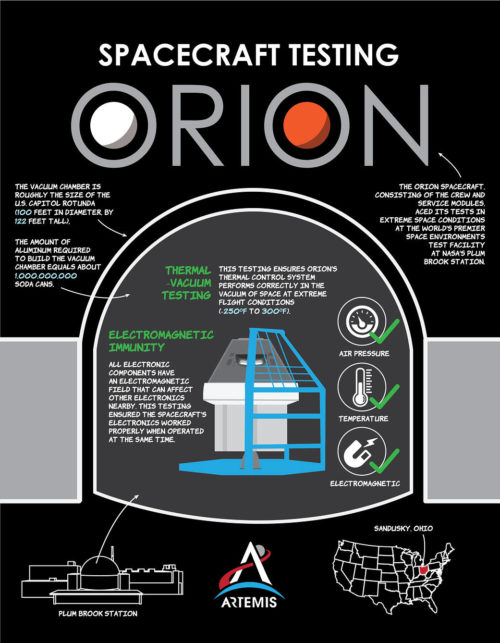
With Orion’s space environmental testing now complete, the spacecraft will head to its launch site at Kennedy Space Center (KSC) in Florida on the agency’s unique ‘Super Guppy’ aircraft, but it has to be transported across over 40 miles of rural Ohio roads to Mansfield Lahm Airport first. It’s currently expected to arrive at KSC on March 24, where it will then be examined for any leaks or damage that could have occurred in transport.
By June, technicians will be ready to install its power-producing solar arrays and begin final processing and integration for the launch of Artemis-1. Both the SLS rocket and spacecraft will finally come together inside KSC’s iconic Vehicle Assembly Building some time in the spring of 2021, where all of NASA’s Saturn V Apollo moon rockets and space shuttle stacks were raised and readied for flight.
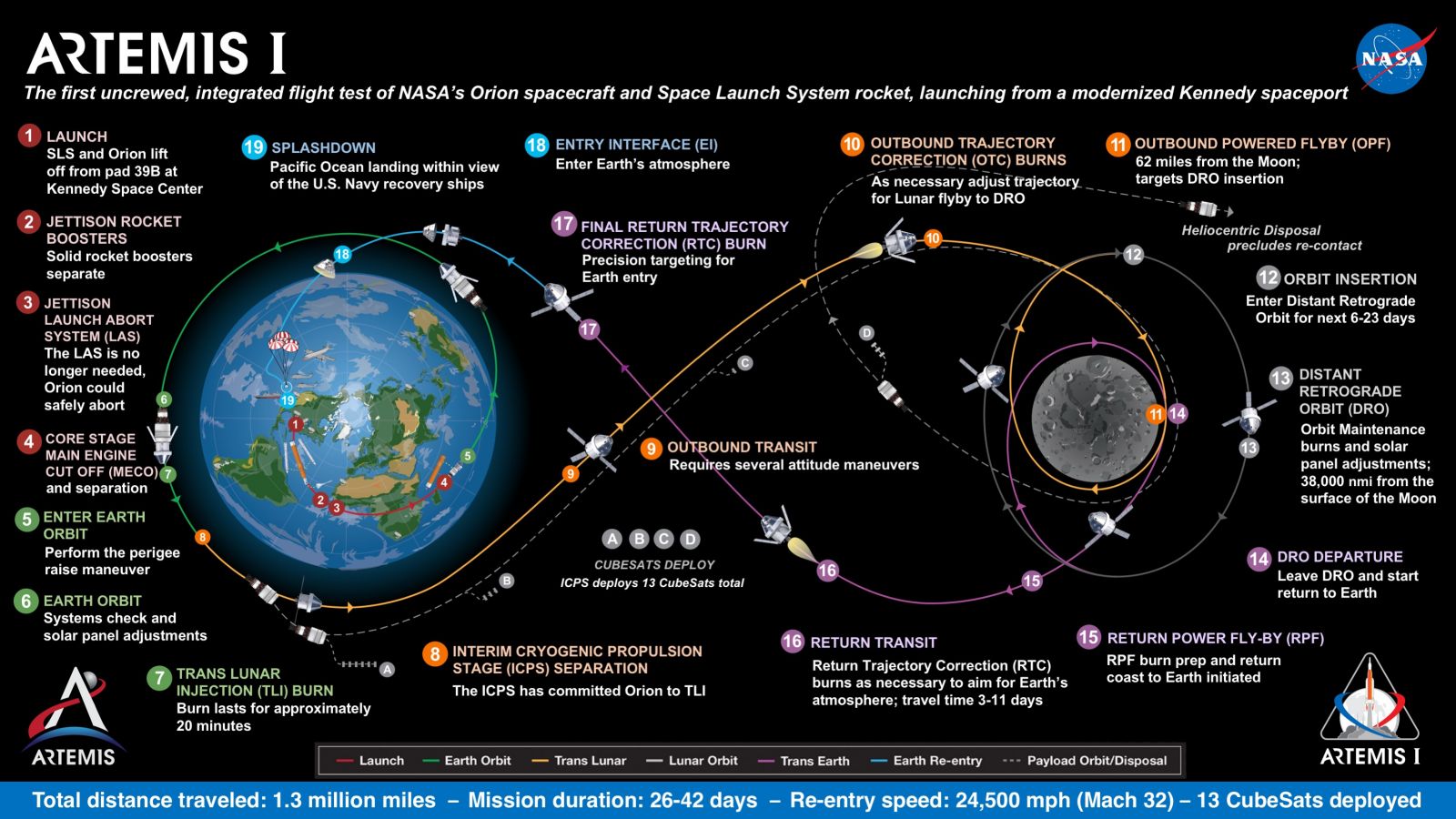
Artemis-1 will be a 3-week un-crewed mission, as it will be a flight test to the moon and back to Earth (like an un-crewed Apollo 8) to validate and prove out the system from launch through flight and re-entry / splashdown / recovery, before NASA puts their first astronauts onboard for Artemis-2, with the current goal of landing astronauts on the lunar surface on Artemis-3 in 2024.
With plans for a lunar gateway / space station and partnerships with the privater sector, following missions will build a sustainable, long-term lunar presence by 2028, which will serve as the foundation for crewed missions to Mars later in the 2030s.
.
.
FOLLOW AmericaSpace on Facebook and Twitter!
.
.




